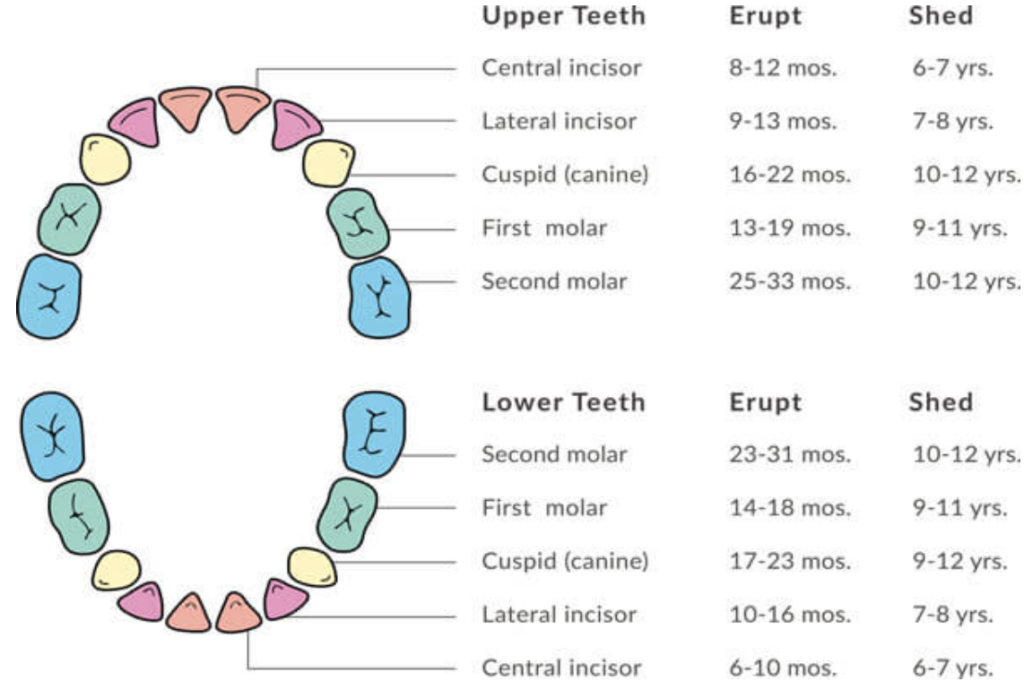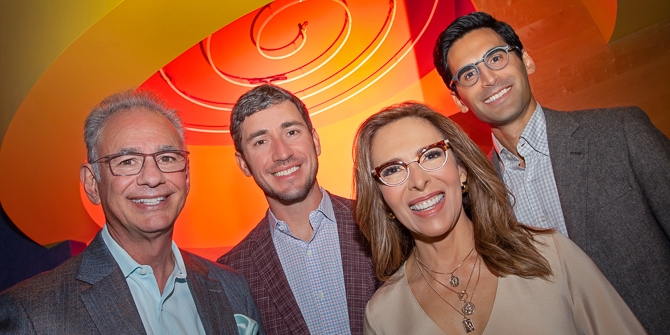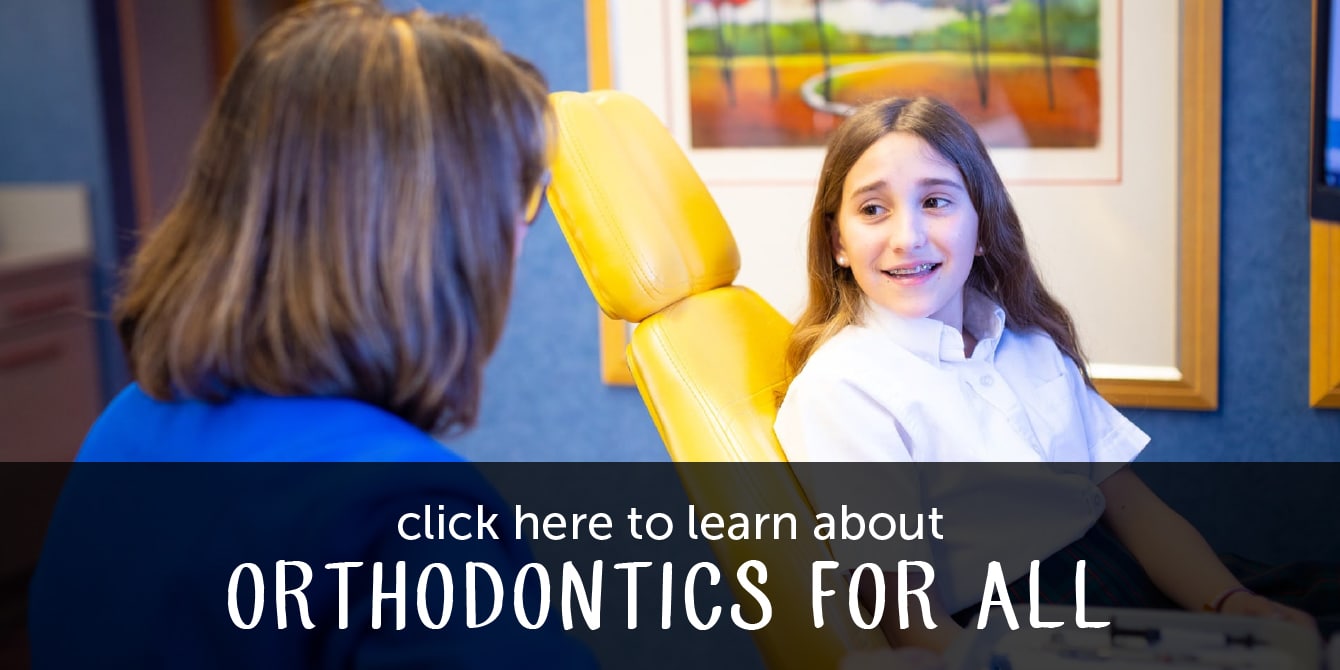When the second set of teeth begins making their appearance, we at myKIDSdds are often met with questions concerning their size, color or shape. “When do permanent teeth come in? How in the world are they going to fit into my child’s mouth?” No doubt these new teeth do not at all resemble those cute little bright white, perfectly shaped baby teeth. It is quite a surprise if you have no idea what is coming, so hopefully this information and adult teeth chart will help prepare you for the transition to an adult smile.
Size, Color, Shape and Texture – Oh My!
Right away you will notice that the front permanent incisors look completely different than their prequels. Their size is double in width, so if the baby teeth did not come in with large spaces between them the permanent teeth cannot possibly fit easily. There may be a lot of crowded behavior to squeeze into a vacant spot. As they emerge, our dentists will let you know the best timing for a possible expansion appliance, or consult with Dr. Cohen, our in-house orthodontist, to weigh in on next steps. If they are fortunate enough to have no crowding issues, intervention may not be necessary. Sometimes immediate action is needed, and other times more permanent teeth arriving is helpful before making a plan. A customized approach is best. When the molars and cuspids are exchanged from age nine to 12, their main differences are increased size, deeper grooves and baby molars becoming adult bicuspids.
The color of the permanent teeth is as variable as hair color and skin tones. They actually tend to be a bit creamier in color on fair skin and a whiter shade on deeper skin tones. When first coming in side by side with primary teeth, the difference is obviously darker. However, when the complete set of permanent teeth is present, the contrast becomes less apparent, and the color looks uniform and natural for that individual.
The shape of permanent front teeth has its own range as well, and you may notice mamelons on teeth that are newly emerged. These serrated or scalloped edges form from three lobes of cells fusing together to create a permanent tooth. The mamelons on teeth typically become level after a few years of natural wear.
If you were to sweep your tongue across permanent teeth, as opposed to baby teeth, you would find them to be less smooth, having more texture which can trap bacteria and stains. Parents might notice their child’s teeth don’t appear as clean and send them back to brush again. It takes twice as long to brush the plaque away on permanent teeth. It’s a tough age to keep them motivated to clean their teeth well when many don’t have the maturity to see the long-term benefits of healthy teeth and gums. We may recommend dental sealants to protect their teeth while they’re still learning good dental habits.
Ideas for cleaning the groovier permanent teeth
Offering any tools they will truly use will possibly help. A power toothbrush can give them the extra cleaning ability with less effort – buying one with a timer is key. They have no idea how quickly they are brushing their challenging, groovy teeth and need a reminder as to when they may stop. Also, a water flosser for between the teeth can be a fun alternative, with cordless ones as an option for the shower, making it easier and less messy than the sink. Though not quite as effective as flossing, let them choose between a water flosser or floss each day if that eases the battle.
A fascinating experiment is to offer them a pink disclosing tablet to chew, swish and spit, or paint it on with a Q-tip after they brush. This colors the areas missed while brushing and gives them a guide to brush again, cleaning all areas still colored pink or purple. We use this method as an educational opportunity at our office, resulting in kids and their parents quite surprised to see which areas they are missing most. The large adult front teeth and the upper molars, both at the gumline, are their most frequent challenges. Baby teeth can benefit from this activity as well with more direct supervision by an adult recommended for both the disclosing and the brushing.
When are they finally finished losing teeth?
“‘When do permanent teeth come in, and when are we done with loose baby teeth?” This is another timing question that concerns parents. Tooth loss is in two distinct phases. Phase one is losing the eight baby incisors in front which can take a couple of years to complete. A long, quiet two-year break follows when nothing happens. Then from about age nine to 12, they lose their first baby molars, then cuspids, and then second baby molars. Notice that these seem out of order since they don’t lose the cheek-side teeth from front to back. It skips a tooth, as that is also the order in which they arrived. We get many calls from parents thinking their child is losing a permanent molar considering it seems awfully late to be dealing with wiggly teeth! An interesting fact is that we often see girls on a faster timeline than boys and will sometimes finish losing all of their primary teeth a full two years earlier, by age 10. Refer to this adult teeth chart for more information about the average age each tooth falls out.

Every person has a unique set of permanent teeth and just like their eye color, hair color and skin tones, they are not exactly like anyone else. DNA and their heredity play a huge role, so comparisons to others would only make sense if they were an identical twin! Sometimes even trauma to an area during the tooth’s development phase can impact its shape and color.
Still have questions?
myKIDSdds is happy to evaluate and answer any questions you have about your child’s permanent teeth to help you understand the difference between what you might see as a concern and what might be within the norm.
Let myKIDSdds be Your Orthodontic Home in Dallas
At myKIDSdds we specialize in providing the top orthodontic care in Dallas. Our experienced team of orthodontic professionals will embrace your child’s unique needs and transform their smile! Our pediatric department will also coach your kiddo to achieve the best oral hygiene while in braces and beyond. We look forward to discussing more with you about the benefits of straight teeth at your complimentary orthodontic assessment. Call our office today, and speak with one of our patient care specialists to schedule your appointment and begin the journey to straighter and healthier teeth!


















